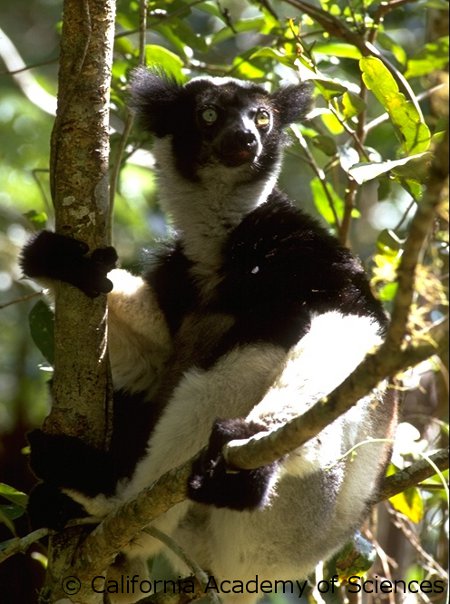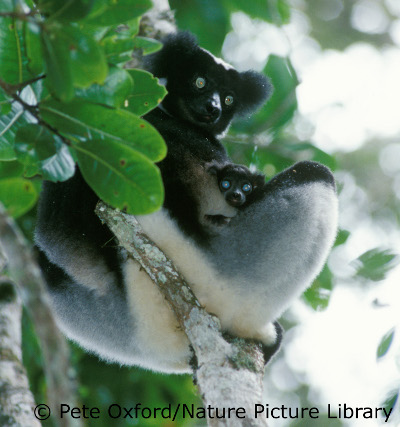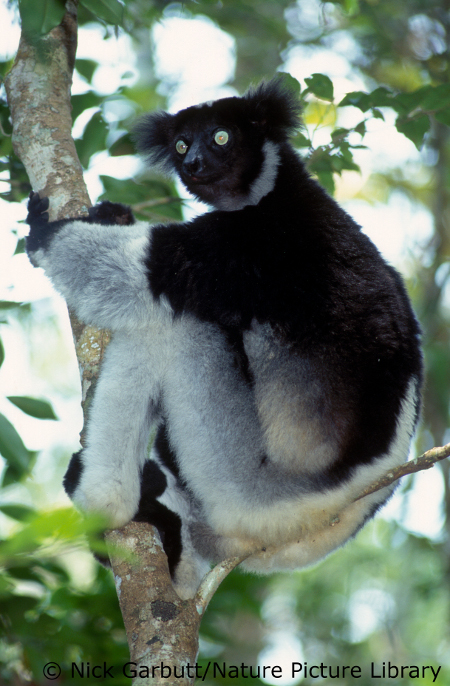 Indri simply means ‘there it is’ in the Malagasy language. The species got its name from local people shouting ‘indri indri!’ when pointing out the animal to European naturalists.
Indri simply means ‘there it is’ in the Malagasy language. The species got its name from local people shouting ‘indri indri!’ when pointing out the animal to European naturalists.
Lemurs are most closely related to bushbabies, pottos and lorises. Common ancestors of the lemur are thought to have colonised Madagascar from Africa 50-60 million years ago, which diversified to fill a wide range of niches resulting in all the lemurs found on the island today. The indri is the only species in its genus.
As the largest of the living lemurs, the indri is different from other lemurs because it almost has no tail. It has a dense coat of silky black and white fur, and prominent black tufted ears. Colouration varies considerably between populations: individuals in the southern end of its range have more white fur than the predominantly black individuals in the north. The indri is well adapted to its tree habitat – with long slender hind limbs it can move through the canopy with spectacular leaps of up to ten metres.

The indri forages during daylight for leaves, flowers and fruit. It lives in groups thought to consist of an adult pair and offspring, and interestingly females are dominant to males.
The indri’s characteristic calls serve to unite groups and determine territory; its loud and eerie wailing can be heard more than two kilometres away.
This species has an extremely low reproductive rate: females reach sexual maturity at 7-9 years of age and give birth to a single young every three years. More than half of infants die from falls, injuries or disease before they are two years old.

EDGE mammals are so unique, and we are doing everything we can to help protect the ones most in need. Help us by becoming a Champion or donating to our conservation programmes today!